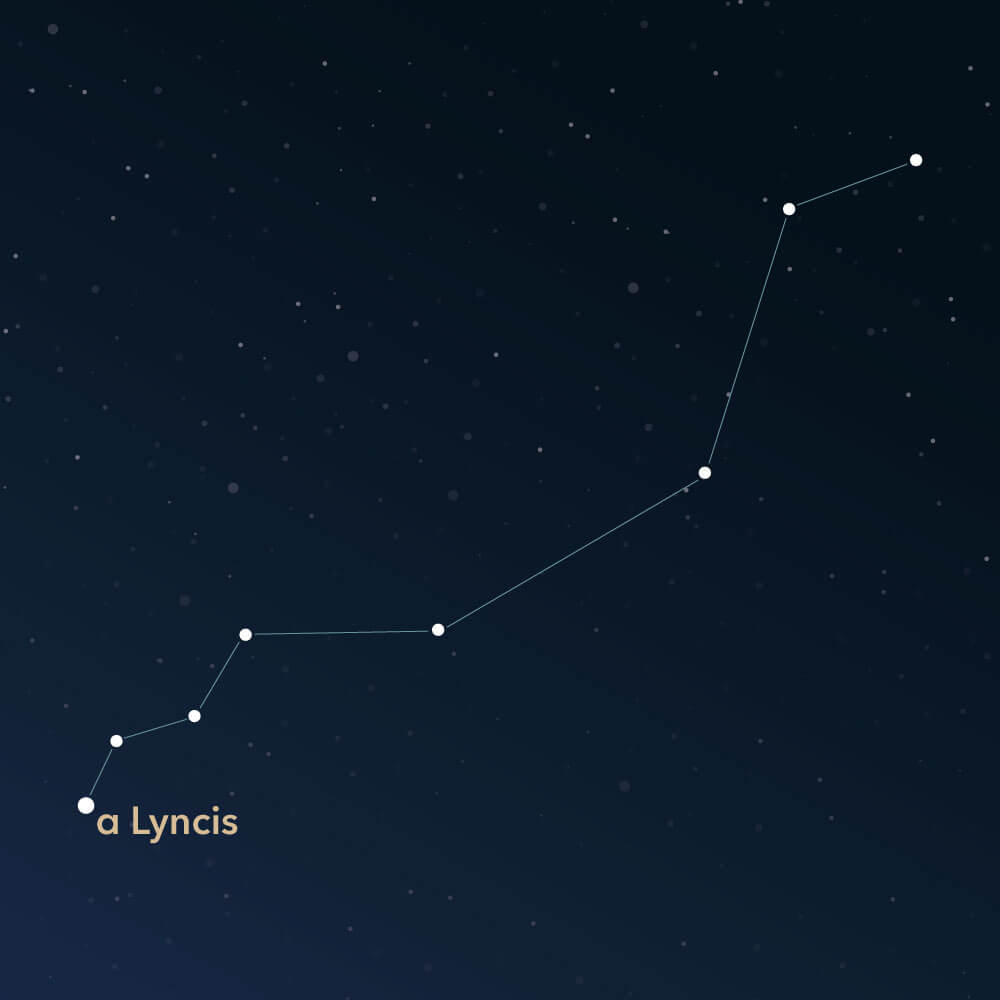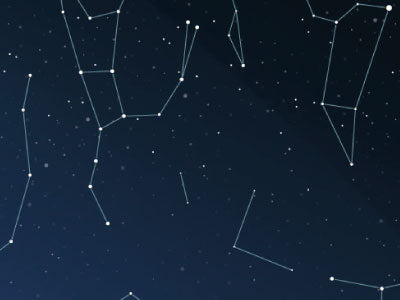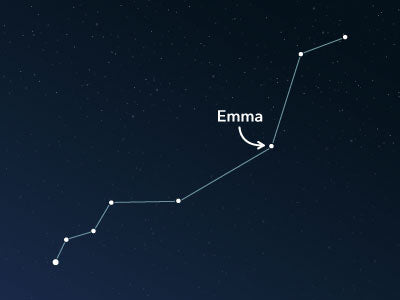The constellation Lynx
Characteristics
- Hemisphere
- Northern hemisphere
- Visibility
- All year round
- Area
- 545 deg²
- Brightest star
- α Lyncis (HIP number 45860)
- Specialties
- Galaxies, globular clusters

The Lynx symbolizes the animal lynx and is a large yet inconspicuous constellation in the northern sky. It was only discovered after telescopes and other equipment for sky observations were used. Some interesting deep-sky objects lie within its boundaries.
Hemisphere, visibility, and area
The Lynx constellation is visible from all regions of the northern hemisphere, but it can only be seen as far south as the 28th parallel. This corresponds to places such as Brisbane in Australia.
Up to 50° northern latitude, the constellation is circumpolar, meaning it is visible year-round in regions such as Canada or Central Europe. It is best observed in southern regions from March to May.
The constellation covers an area of about 545 square degrees, making it the 28th largest of all 88 constellations.
In most depictions, Lynx is visualized as a chain of faint stars, starting with the brightest star, α Lyncis (Alpha Lyncis). It is a red giant with an apparent magnitude of roughly 3.14. It is located about 200 light-years away and is estimated to be 1.4 billion years old. Thus, the star is younger than the sun.
The unremarkable appearance of faint stars makes it challenging to find Lynx in the night sky. Therefore, it is helpful to look for the neighboring constellations. Lynx is surrounded by Camelopardalis, Auriga, Ursa Minor, Leo Minor, and Ursa Major. In addition, the two astrology-known constellations, Gemini and Cancer, border it. Moreover, it is adjacent to Leo.
Specialties in the constellation
In the area of the Lynx constellation, there are faint galaxies and globular clusters that require at least a bright telescope with a large aperture for observation.
One of the galaxies is NGC 2683, also known as the UFO Galaxy. It is a spiral galaxy located approximately 17 million light-years away from the Milky Way. The German-British astronomer William Herschel discovered it in February 1788.

In the same year, William Herschel also found the globular cluster NGC 2419. Initially, the object was only perceived as a hazy patch. It was not until 1850 that the Irish astronomer Lord Rosse was able to resolve the star cluster into individual stars using a telescope. Although its distance from the solar system is about 275,000 light-years, NGC 2419 belongs to the Milky Way.
History
Due to the faint stars, the region of Lynx was not given much attention for a long time. It was not until the mid-17th century when there was better equipment for observing the sky, that the area was defined as a constellation.
Johannes Hevelius, the then-mayor of Danzig, was the first astronomer to measure the Lynx constellation. He named it after the animal because one would need "eyes like a lynx" to recognize the constellation. In 1690, the constellation was finally included in an official star chart.
Constellation Visibility Tool
Los Angeles, USA
34.05°, -118.24°
Constellation Observing Guide
This guide shows when the constellation is visible above the horizon and provides the optimal viewing window when the sky is darkest. Times are displayed in the location's timezone (PDT).
🎯 Best Observing Window
Optimal time when the constellation is fully visible AND the sky is at its darkest. Perfect for telescopic observations, astrophotography, and viewing faint details.
Optimal start
21:26
Jun 26, 21:26
Optimal end
23:31
Jun 26, 23:31
Duration
2.09h
Prime observing time
✨ Perfect Observing Conditions
This is the overlap when the constellation is above horizon AND the sky is at its darkest. Ideal for telescopic observations and photography.
Constellation Visibility from Your Location
6
Visible Stars
0
Never Rise
2
Always Up
100%
Visible
2 stars are circumpolar (always visible) from your location
Constellation Visibility
When the constellation is above the horizon (includes daylight hours)
Rises
Always Up
Always Up
Fully Up
Always Up
Starts Setting
23:31
Jun 26
Fully Set
Never fully settles below horizon
Above Horizon Times
Includes daylight hours when stars aren't visible to naked eye.
Astronomical Night
When the sky is darkest (sun >18° below horizon)
Dark sky begins
21:26
Jun 26
Dark sky ends
04:36
Jun 27
Darkest Sky Period
Sun more than 18° below horizon. Best for faint objects.
Observing Tips
Read more interesting articles

An overview of all 88 constellations
Learn more about all 88 constellations and read interesting information about the mythology, visibility, and features.

Planetarium App
Discover the night sky with our planetarium app!
Available for iOS and Android.

Name a star in the constellation Lynx
Name a star in a constellation and create something that lasts for eternity.